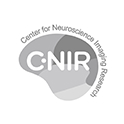People
People Search
Categories
Directory

- Minah Suh
- Professor
- Neuovascular Coupling, Epilepsy, Chronic Stress
- Department of Biomedical Engineering
- minah.suh

- http://sites.google.com/view/minahsuh
- Information
Lab Name: Neurovascular Coupling Laboratory
Introduction
Our laboratory aims to understand the basic mechanism of physiological interaction among neurons, glias and vascular system and provide better insights for perfusion related neuroimaging techniques. Our particular research interests include: 1) Study the effect of chronic stress on neurovascular coupling at functional and structural level, 2) Study the effect of pathologically heightened neuronal excitation and synchronization on neurovascular coupling at functional and structural level and develop cell-therapy for epilepsy, 3) Study neurovascular coupling mechanism through neurovascular coupling modulators, such as nitric oxide, carbon monoxide, & glucose, and 4) Develop novel techniques to restore neurovascular coupling dysfunction
Selected Recent Publication
1. Lee S, Kang B, Shin M, Min J, Heo C, Lee Y, Baeg E, Suh M*, "Chronic stress decreases cerebrovascular responses during rat hindlimb electrical stimulation", Frontiers in Neuroscience 23;9:462, 2015.
2. Im S, Kim WJ, Kim YH, Lee S, Koo JH, Lee JA, Kim HM, Park HJ, Kim DH, Lee HG, Yoon H, Kim JY, Shin JH, Kim LK, Doh J, Kim H, Bothwell ALM, Lee SK, Suh M, Choi JM*, "A novel CNS-permeable peptide, dNP2 enables cytoplasmic domain of CTLA-4 protein to regulate autoimmune encephalomyelitis", Nature Communication 15;6:8244, 2015.
3. Jo A, Heo C, Schwartz TH, Suh M*, "Nanoscale intracortical iron injection induces chronic epilepsy in rodent", Journal of Neuroscience Research 92(3):389-397, 2014.
4. Heo C, Lee SY, Jo A, Jung S, Suh M*, Lee YH*, "Flexible, transparent, and non-cytotoxic graphene electric field stimulator for effective cerebral blood volume enhancement", ACS Nano 25;7(6):4869-4878, 2013.
5. Jo A, Do H, Jhon GJ, Suh M*, Lee Y*, "Electrochemical nanosensor for real-time direct imaging of nitric oxide in living brain", Anal Chem 1;83(21):8314-8319, 2011.

- Myunghwan Choi
- Associate Professor
- intravital microscopy, optical neuromodulation, bio-integrated photonics
- Department of Biomedical Engineering
- choim

- https://sites.google.com/site/photomodulation
- Information
Neurophotonics Lab
Introduction
We use light as a tool to understand and manipulate living biological system, aiming to address pressing problems in neuroscience. Our research theme includes but is not limited to intravital imaging techniques, optical neuromodulation, and bio-integrated photonics. We take multidisciplinary approaches integrating optics, engineering, and biomedicine.
Selected Recent Publications
1. Choi M, Choi JW, Kim S, Nizamoglu S, Hahn SK, Yun SH, "Light-guiding hydrogels for cell-based sensing and optogenetic synthesis in vivo", Nature Photonics 7(12): 987-994, 2013 (featured in Nature Photonics, Nature Methods, Nature Review of Endocrinology, Thomson Reuter, etc.).
2. Choi M, Ku T, Chung K, Yoon J, Choi C, "Minimally invasive molecular delivery into the brain using optical modulation of vascular permeability", PNAS 108(22): 9256-9261, 2011.
3. Kim JK*, Lee WM*, Kim P*, Choi M*, Jung K, Kim S, Yun SH, "Fabrication and operation of GRIN probes for in vivo fluorescence cellular imaging of internal organs in small animals", Nature Protocols 7: 1456-1469, 2012 (*co-first author; cover article).
4. Choi M, Humar M, Kim S, Yun SH, "Step-index optical fiber made of biocompatible hydrogels", Advanced Materials 27: 4081-4086, 2015.
5. Choi M, Lee WM, Yun SH, "Intravital microscopic interrogation of peripheral taste sensation", Scientific Reports 5: 8661, 2015.

- Joon-Yeol Lee
- Associate Professor
- Attention, Sensorimotor transformation, Cognitive neuroscience, Neurophysiology
- Department of Biomedical Engineering
- joonyeol

- http://sites.google.com/site/leelabatskku/
- Information
Sensorimotor Cognition Lab
Introduction
My lab is interested in how attention and cognition modulate sensory neural representation and transmission of the neural information to the downstream motor areas in the brain. I use in-vivo neurophysiological recording techniques, computational modeling, and sophisticated behavioral control for understanding neural codes in the cortical/subcortical regions using NHP as an animal model. The lab also pursues to address the same questions using brain imaging techniques, including EEG and fMRI, through collaboration with others in the center.
Selected Recent Publications
1. Joonyeol Lee and Stephen G. Lisberger, "Gamma synchrony predicts neuron–neuron correlations and correlations with motor behavior in extrastriate visual area MT", Journal of Neuroscience 33: 19677-19688, 2013.
2. Joonyeol Lee, Mati Joshua, Javier F. Medina, and Stephen G. Lisberger, "Signal, Noise, and Variation in Neural and Sensory-Motor Latency", Neuron 90: 1-2, 2016.
3. Jin Yang*, Joonyeol Lee*, and Stephen G. Lisberger, "The interaction of Bayesian priors and sensory data and its neural circuit implementation in visually guided movement", Journal of Neuroscience 32: 17632–17645, 2012 *Equal contribution.
4. Joonyeol Lee and John H. R. Maunsell, "Attentional modulation of MT neurons with single or multiple stimuli in their receptive fields", Journal of Neuroscience, 30: 3058-3066, 2010.
5. Joonyeol Lee and John H. R. Maunsell, "A normalization model of attentional modulation of single unit responses", PLoS ONE, 4(2): e4651, 2009.

- Yong Ho Kim
- Associate Professor
- Design of New Biomaterials for Stem Cell, Angiogensis, Antibacterial and Cosmetics
- Department of Chemistry
- yhkim94

- http://www.yhproteinlab.com/
- Information
Lab Name: Protein Design & Protein Materials Lab
Introduction
Our laboratory focuses on design and structural characterization of supramolecular protein assemblies that can be toward to make cellular and molecular therapies effective and practical approaches eventually to treat disease. Protein-based biomaterials designed by utilizing the tools of De Novo protein design (rational and computational designs) are used to study the mechanisms by which chemical or mechanical signals are sensed by cells and alter cell function. These biomaterials that interface with nanoscience are used to deliver drugs safely and efficiently; to prevent, detect, and treat disease; to assist the body as it heals; and to engineer functional tissues outside of the body for organ replacement. Our biomaterials are now designed rationally or computationally with controlled assembly structure and dynamic functionality to integrate with biological complexity and perform tailored, high-level functions in the body. Design of new biomaterials provides desirable cues in a variety of tissue engineering, immunotherapy and drug delivery to promote the regeneration or targeted destruction of tissues and organs in the body.
Selected Recent Publications
1. Yong Ho Kim, Jason E. Donald, Gevorg Grigoryan, George P. Leser , Alexander Y. Fadeev, Robert A. Lamb, and William F. DeGrado, “Capture and Imaging of the Pre-hairpin Intermediate in Viral Membrane Fusion of the Paramyxovirus PIV5”, Proceedings of the National Academy of Sciences 108: 20992-20997, 2011.
2. Gevorg Grigoryan*, Yong Ho Kim*, Rudresh Acharya, Kevin Axelrod, Rishabh M. Jain, Lauren Willis, Marija Drndic, James M. Kikkawa, and William F. DeGrado, “Computational Design of Virus-like Protein Assemblies on Carbon Nanotube Surfaces”, Science 332: 1071-1076, 2011 *- Authors contributed equally.
3. Ivan V. Korendovych, Yong Ho Kim, Andrew H. Ryan, James D. Lear, William F. DeGrado, and Scott J. Shandler, “Computational Design of a Self-Assembling β-Peptide Oligomer”, Organic Letters 12: 5142, 2010.
4. Ivan V. Korendovych, Alessandro Senes, Yong Ho Kim, James D. Lear, H. Christopher Fry, Michael J. Therien, J. Kent Blasie, F. Ann Walker, and William F. DeGrado, “De Novo Design and Molecular Assembly of a Transmembrane Diporphyrin-Binding Protein Complex”, Journal of the American Chemical Society 132: 15516, 2010.

